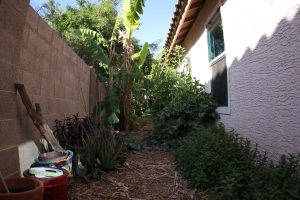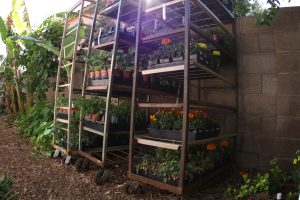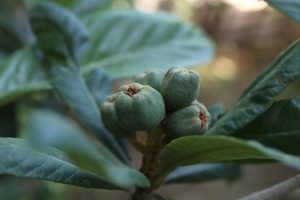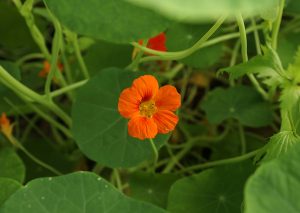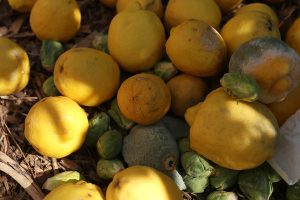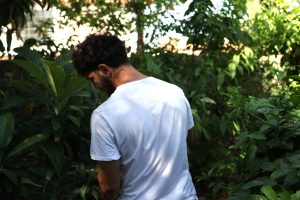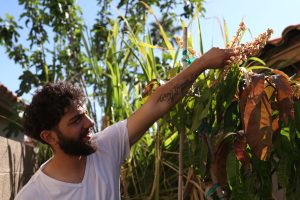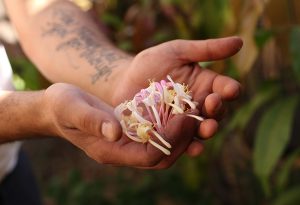- Slug: BC-CNS-Food Forest 360. 445 words.
- 9 photos available.
- 2 panoramas available here and here. To embed on your website, iframe in the aforementioned links: <iframe src=”link goes here”></iframe>
By Paula Soria
Cronkite News
GLENDALE – As you walk into Justin Haddad’s backyard, you can feel it cool down, and suddenly you are surrounded by leaves, shade and the smell of nature.
Haddad has been growing a “food forest” in his backyard for the past seven years, which includes a variety of subtropical and desert-hardy plants that feed him and his family fresh produce daily. He has turned his skills into a business, launching Herbal.Lyf.Styl in 2017, a permaculture landscape design company that specializes in repurposing land to create a sustainable, edible and medicinal landscape for clients.
“We use permaculture methods, which are a science that imitates nature to make gardening easier,” Haddad said.
Haddad’s interest in the landscape design practice of permaculture developed through his growing health consciousness. He started to become aware of the harmful chemicals in produce, such as herbicides and insecticides, as well as the manipulation involved in the mass production of fruits and vegetables.
While searching for methods to grow his own produce, he came across the concept of permaculture. Haddad started reading and watching YouTube videos about the practice and soon began growing his own produce and turned his backyard into a food forest. The food he consumes today is mostly from his backyard.
According to the Association for Temperate Agroforestry, food forests in the Southwest were first established in the 1500’s following the arrival of the Spanish. Prior to this, Native Americans managed trees in the region, but their practices did not fit accurately with the concept of permaculture.
Phoenix has subtropical growing conditions. Haddad has been able to grow subtropical fruits including papaya, guava, mangos and bananas in the middle of the desert.
“A lot of subtropical plants would be almost considered taboo in some people’s eyes, but they do extremely well out here,” Haddad said.
Haddad said that through the first couple of years and stages of growing a food forest, time and dedication are crucial. He said it takes about 10 years for a food forest to become self-sustainable – where constant human interaction is not necessary anymore – especially if proper care is being taken.
Haddad and Herbal.Lyf.Styl advocate creating a healthier lifestyle through the consumption of produce their clients eat. Since he began the company in 2017, Haddad has worked in the development of six food forests across the Valley. He said his goal is to expand and help people grow these all around the world.
“Once we leave this Earth, whatever we leave behind will stay, and if you leave behind a permaculture setting, it won’t just stay, it will thrive and sustain,” Haddad said. “You can really leave a legacy by just planting plants.”
For more stories from Cronkite News, visit cronkitenews.azpbs.org.
